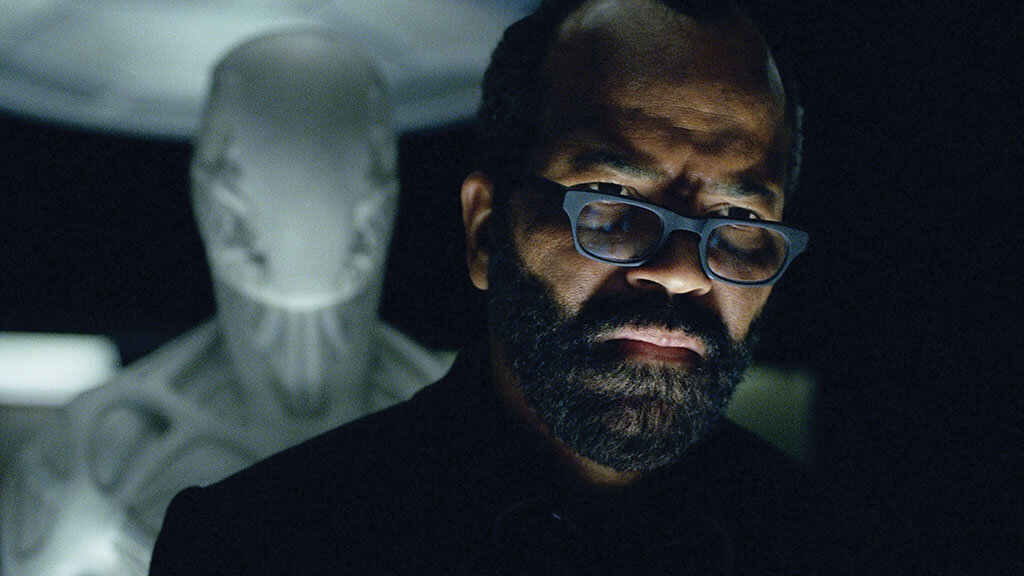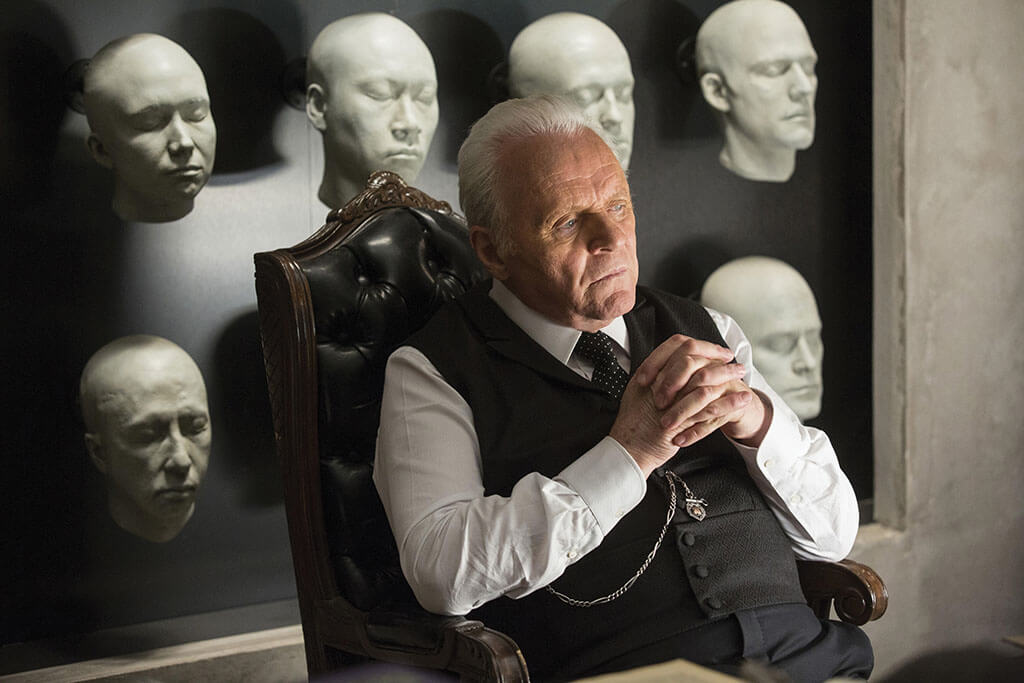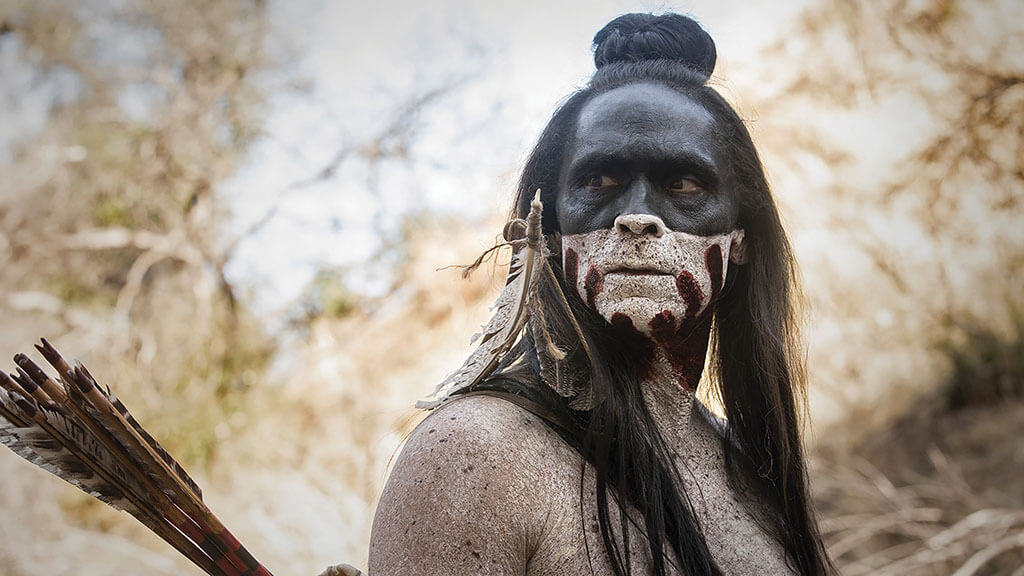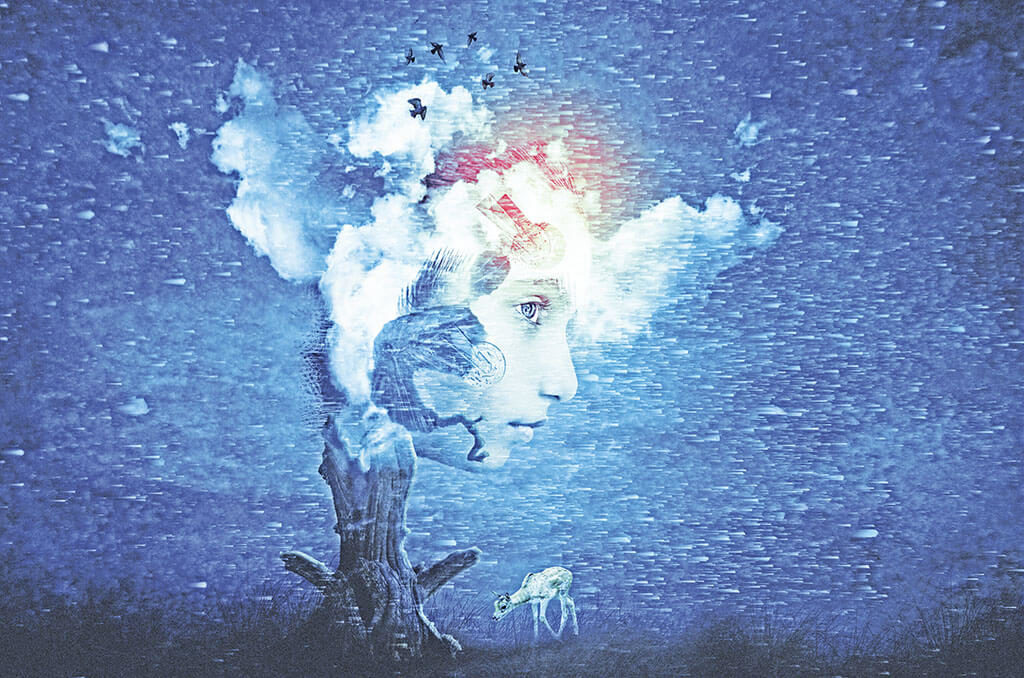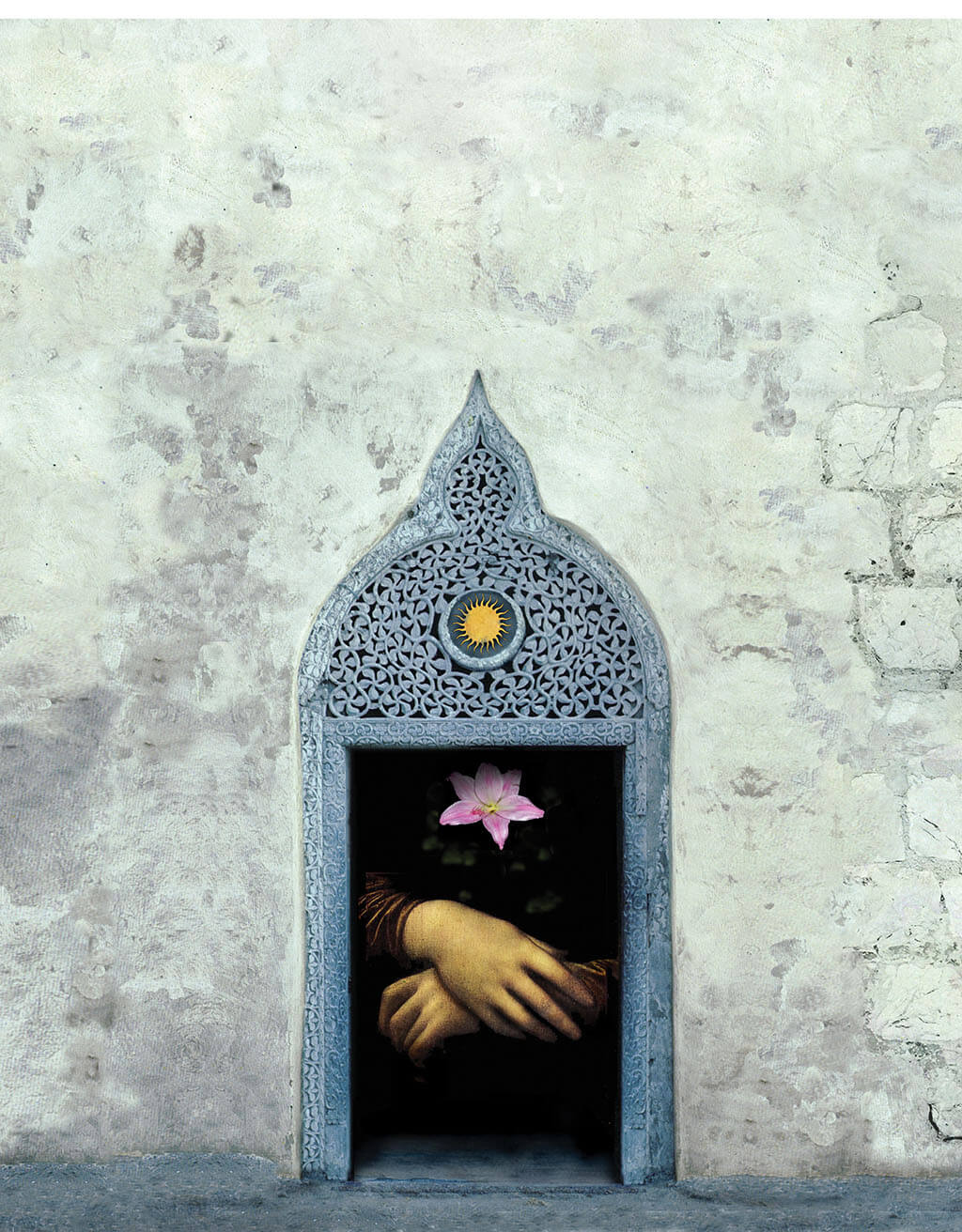 The Inspired Soul
The Inspired Soul
The Visions of Zayd in Rumi’s Masnavi
By JAWID MOJADDEDI
Dreams that predict the future represent for many people their first taste of mystical experience. They turn upside down our ordinary perception of time and causality to such an extent that people often doubt them even after they have been fulfilled in front of their eyes. This is in stark contrast to the attitude of mystics with greater receptivity to dreams and visionary experiences, for whom they provide knowledge with the very highest degree of certainty. The influence of dreams and visions is so pervasive in mystical writings that one need look no further than the first few pages of the mystic Rumi’s (d. 1273) famous poem The Masnavi to find a teaching story that involves a dream.
[wcm_restrict plans="Sufi Journal Digital Edition, Sufi Journal Digital Edition old"]
The First Story of The Masnavi
With so many universally appealing stories in The Masnavi, it strikes the reader as somewhat strange that the first major teaching-story is quite difficult to stomach. After all, its plot centers on a murder carried out by the protagonists. The story begins with an old king falling in love with a slave-girl he chances upon and then buying her eagerly, only for her to fall ill:
The king’s heart fluttered like a caged bird, restless,
And so he bought the girl as his new purchase.
As soon as he had bought her suddenly
She then became so sick by destiny.
You fetch a saddle for your mule one day
And while you’re gone wolves chase that mule away.
You finally find some water and then take
Your pot to fill, but it then starts to break.
(Rumi, The Masnavi, Book One, ed. M. Estelami, vv. 39-42)
The king becomes transformed in the story once he has the dream, which is presented as the response from God to his prayer for help in healing the slave-girl after the failure of all his court physicians. The king’s love for the slave-girl is seen by the reader for the first time as being valid rather than something superficial, all because of the dream. The character who had the dream was up to that point in the story a rather self-gratifying and buffoonish king, but Rumi now transforms him into the perfect disciple of a spiritual master (the healer who is sent to him):
The king saw in him, just as it had been,
The image which while dreaming he had seen,
And so, instead of chamberlains, he went
Himself to greet the healer who’d been sent.
Both swimmers in the seas of union,
Their souls without a thread were sewn as one:
‘The one I love is not that maid but you.
One thing led to another, as they do.
You’re Mostafa and I’m Omar, your friend,
Prepared to serve you till the very end.’
(Ibid, Book One, vv. 73-77)
Soon after his arrival the divinely-sent healer identifies the obstacle in the way of the king’s consummation of his love for his sick slave-girl, in the shape of the lover whom she misses sorely, and plots that young man’s murder as the healing treatment.
It is presumably for the sake of the surprising twists and turns of his narrative that are designed to startle the reader into continual attention that Rumi portrays the king very differently at the beginning of the story. At that point one might expect it to develop into a typical romance that would end with the two estranged young lovers reuniting forever more, despite the obstacle of this older and more powerful rival. But the divine communication in the form of a dream changes everything, just as divine communication of other kinds does for Moses in the famous “Moses and the Shepherd” story (Book Two, vv. 1724-), and for David in the story about the man who prayed that God would provide his sustenance without him ever having to work (Book Three, vv. 1451–), to name two well-known cases. In each case this is possible because dreams and revelation represent certain knowledge that is beyond argument and doubt, and overrules all logic and book knowledge.
The Story of Zayd’s Visions
Most of the major teaching stories in Book One of Rumi’s Masnavi, such as “The Merchant and His Parrot,” “The Old Harpist,” and “The Bedouin and His Wife,” are relatively straightforward to grasp. In fact, Rumi himself provides a running commentary to them. The story about Zayd’s visions is arguably the most elusive of them, however, and it is emphatically mystical in its teachings. After all, it is explicitly about mystical visions.
The plot of this story is fairly simple: the Prophet Mohammad asks his disciple Zayd one morning how he has woken up and Zayd responds with reference to his visions (they seem to be different to dreams, since he also mentions that he cannot sleep due to them). The Prophet asks for evidence, and after Zayd shares with him the nature of his visions at length, the former finally advises him:
Your horse has grown excited – pull the reins!
“God feels no shame”; in you now none remains.
Your mirror has slipped out of its own cover,
But with Truth’s weighing scales can it now differ?
How can they both keep silent out of tact,
So as to not shame someone with a fact?
They are both touchstones which speak truthfully:
Though you should serve them for a century
Then say: “Conceal truth for my benefit:
Display the profit, hide the deficit!”
“Don’t make yourself look stupid!” they will cry,
“Just for your sake can scales and mirrors lie?
Since God has made us for this aim alone
That, through us both, the truth can be made known,
If we don’t do exactly as we should
We won’t be worthy for the fair and good.”
So put the mirror back, Zayd, in its case;
Your breast’s been split like Sinai by God’s face.’
(Ibid, Book One, vv. 3558-66)
The Prophet advises his disciple to keep what he has seen concealed, “back in its cover,” because his condition is such that he can tell nothing but the truth, like a mirror or weighing-scales, and most people cannot handle that truth. Zayd’s visions are considered by the Prophet in this story as being as true and certain as a dream that is a message from God, so the issue here is not whether or not they might be doubted, but instead the importance of treating such knowledge with special care. By making a reference to the Qur’anic verse about God “not having any shame,” (33/53) which is traditionally understood to mean that God tells it as it is without concerns about the devastation this may cause, and God splitting Mount Sinai by revealing Himself, the Prophet seems to be praising Zayd as having genuinely reached a degree of effacement in God.
The actual visions that Zayd describes in this story relate to the mysteries of human existence, such as our experience of time, our destiny after our life on earth, but most of all the reality beyond our limited human perception, and he admits he is very tempted to divulge it all. However, the Prophet not only warns him in this story that it is preferable to withhold such knowledge, but also explains why in the following manner:
Zayd, none can venture to its furthest reach –
Shackle the steed Boraq which brings you speech!
Such talk can tear apart the veil between
This world, with all its faults, and the Unseen.
God’s wish is to stay hidden still today,
So drive the drummer off and bar the way!
He’s best left veiled, so draw the reins, sit tight!
Let men enjoy their thoughts but still lack sight.
The Lord wants even those who’re in despair
To worship Him and never turn from there.
With just the hope that they might gain His grace
These men will chase such goals for several days.
(Ibid, Book One, vv. 3622-27)
The Prophet Mohammad explains here that the visionary revelation he has received about Reality is not for everybody, and would only cause harm to most. The nature of the Prophet’s explanation here furthermore suggests that Zayd not only needs him to pass on the knowledge explaining why he should keep silent, but also, by implication, that he is not yet totally effaced in God—if it is God’s wish to have the visionary knowledge revealed to him withheld, then the temptation to divulge it must be Zayd’s own desire. The Prophet guides him successfully away from this pitfall of the self, such that by the end of the story Rumi can comment:
You won’t find Zayd now, for this man has fled,
Like horses from the shoeing line they dread.
Who’re you? Zayd cannot find himself – he’s gone
Just like a star on which the sun has shone.
(Ibid, Book One, vv. 3682-83)
What is particularly interesting about this teaching-story is that it illustrates how crucial a spiritual guide is for the mystical aspirant in the latter stages of the path. Rumi’s inclusion of this teaching-story about Zayd’s visions shows that he appreciated this highly. The surgical precision and sensitivity required for guidance in this most delicate situation, due to the visionary experiences’ requirement of familiarity with elusive subtleties and fine distinctions, is what is shown by Rumi to make it so crucial.
Prophet Mohammad asks his disciple Zayd one morning how he has woken up and Zayd responds with reference to his visions (they seem to be different to dreams, since he also mentions that he cannot sleep due to them). The Prophet asks for evidence, and after Zayd shares with him the nature of his visions at length, the former finally advises him…to keep what he has seen concealed, “back in its cover,” because his condition is such that he can tell nothing but the truth, like a mirror or weighing-scales, and most people cannot handle that truth.
The Inspired Soul
Rumi famously opted not to write a prose Sufi manual to illustrate his teachings, preferring to convey them in the masnavi form of poetry. Not only did he shun composing a systematic exposition of Sufism, but his main didactic work, The Masnavi, is famously disorderly in appearance. And yet in spite of this, it is rated as the greatest of such poems in the Sufi masnavi genre. It may be more accurate to say “because of this,” because, instead of a systematic approach, he takes the reader by the hand through a rollercoaster ride of the mystical itinerary. In this way he can give them a mental and emotional taste of the path by their following of his every word through the unexpected twists, turns, ascents and descents that he has put in place.
If one wants to situate the story of Zayd within a more systematic framework for the Sufi path, then a useful resource for comparison is the Mersad al-Ebad of the Sufi author Najm al-Din Razi (d. 1256), a Persian contemporary of Rumi in Anatolia. In the Mersad, Razi offers a four-part classification of the stations of the soul, where in addition to the usual group of three, namely “the commanding soul,” “the self-blaming soul” and “the tranquil soul,” Razi incorporates “the inspired soul” (nafs-e molhama)1. He presents this as the penultimate stage coming immediately before “the tranquil soul” (nafs-e motma’enna). That last stage represents the completion of the Sufi path and the return to subsistence in God, and it is famously illustrated in The Masnavi by the climactic story about Ali embracing his foretold death at the end of Book One. It is therefore surely no coincidence that the preceding story about Zayd’s visions can be seen to correspond to Razi’s stage of “the inspired soul,” which he relates to the final stage in the following way:
God has indicated that if the soul is nurtured at this station, it will prosper—that is, from the blossom of being inspired (molhamegi) it will grow into the fruit of being tranquil (motma’ennagi). But if it is deprived of guidance (tarbeyat), it will suffer loss, meaning that it will wither while still a blossom and die.
(Razi, Mersad al-Ebad, ed. M. A. Riahi, p. 363.)
Razi presents guidance and nurture as being the key requirements to traverse successfully this stage of “the inspired soul,” which corresponds with the story of Zayd’s visions and the advice from the Prophet Mohammad. Razi’s stress on the dangers at this stage without guidance is perhaps even more emphatic than the warnings given to Zayd by Mohammad in Rumi’s story:
In no station other than that of the inspired soul is the soul so delicate and exposed to such danger, because while not yet fully free from itself, it has had a taste of the unseen and of divine communications. It could therefore be deluded into imagining that it has attained the station of perfection already, fall prey to Satan’s wiles, and gaze upon itself with arrogance, complacency, self-conceit and self-approval, thereby becoming the Satan of the age, and getting swept down like blossom by the gale of condemnation from the tree of acceptance to the dust of abasement.
(Ibid, p. 363.)
While Rumi’s warnings to Zayd stress the harm visionary knowledge can have on ordinary people, Razi focuses instead on the harm such knowledge can do to the recipient if he or she is not saved from delusory arrogance. If one looks at the material coming just before the story about Zayd’s visions in The Masnavi, one can see that Rumi does actually discuss such pitfalls there (e.g. the shorter stories about the Prophet’s scribe who believed he was receiving the Qur’anic revelation himself, and the falls from grace of Satan and of Balaam), using the story of Zayd to illustrate how one can traverse this stage successfully.
The pitfall of delusory arrogance at the penultimate stage of the path actually seems to have been widely appreciated at the time of these two authors. Manuscripts of the Sufi precursor to the popular snakes [or chutes] and ladders game, called “Chess of the Mystics” (and produced in English by Khaniqahi Nimatullahi as “The Sufi Game”), which are particularly numerous from 13th-century Anatolia, reveal how the Sufi path was commonly perceived by practitioners then. The biggest snakes of all are found at a correspondingly penultimate stage in this board game, and they are very often labeled “pride” and “delusion.”
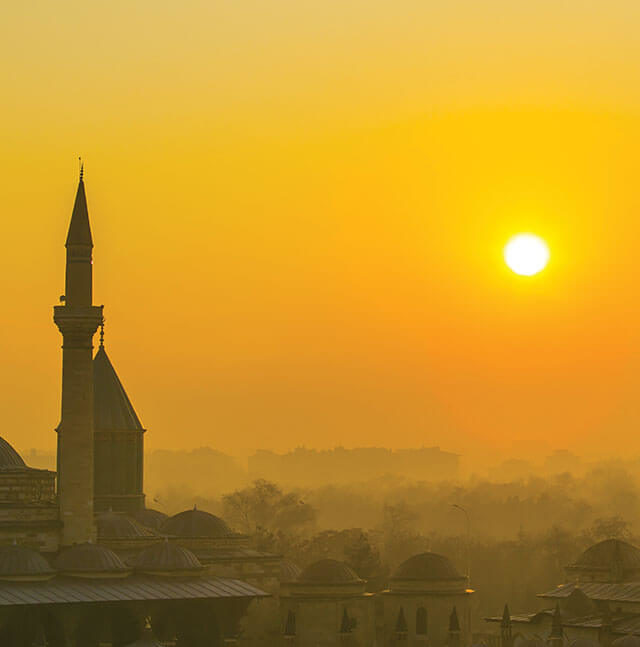
To recapitulate, what Sufi writings reveal is that dreams were widely considered a form that divine communication can take, and, like all forms of divine communication, they represent unquestionable certainty. This is taken advantage of by Rumi in his story-telling to enable his idiosyncratic style replete with unpredictable twists and turns that are often initiated by such divine communications. Among Sufi mystics in general it was also widely accepted that visionary experiences are particularly intense at the latter stages of the path and represent a very serious danger that requires the most delicate care in how one handles them. It is appropriate that Rumi’s story about this involves the Prophet Mohammad advising Zayd about his visions one morning because there exist various biographical traditions reporting that he would discuss the dreams of disciples with them at dawn. Moreover, the centrality to the mystical image of the Prophet Muhammad of divine communication makes it unsurprising that such experiences should be discussed so often by Sufis like Rumi, who famously compares this experience in the production of his own poetry with that of the Qur’an.2 The stress Rumi places on the necessity for nurture from a Master capable of guiding with surgical precision and sensitivity at this stage can also be taken as a sign of his predilection. He expresses his gratitude for the good fortune of finding such a Master in his poetry repeatedly, and when one thinks of the depths of the pitfalls that he feels must be avoided and the felicity that he describes ahead, one can better appreciate his praise of Shams:
Where in the two worlds can one find
one as gentle and kind as our Master?
He never raises his eyebrow or frowns
even after witnessing error upon error.
(Rumi, Divan-e Shams-e Tabriz, Ghazal #44.)
NOTES
1 See further J. Nurbakhsh, The Psychology of Sufism, Khaniqahi Nimatullahi, London and New York,1992.
2 See further J. Mojaddedi, Beyond Dogma: Rumi’s Teachings about Friendship with God and Early Sufi Theories, Oxford University Press, Oxford and New York, 2014, chp 3.
[/wcm_restrict]
ARTWORK © MICHAEL GREEN ARTS
PHOTO © MEHMETCAN/ADOBESTOCK.COM
[wcm_restrict plans="Sufi Journal Digital Edition, Sufi Journal Digital Edition old"]
RETURN TO ISSUE 97 TABLE OF CONTENTS
[/wcm_restrict]
[wcm_nonmember]
To read this article in full, you must Buy Digital Subscription, or log in if you are a subscriber.
[/wcm_nonmember]
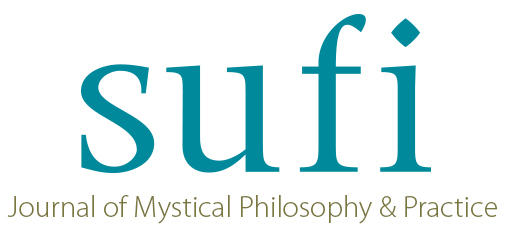

 The Inspired Soul
The Inspired Soul
